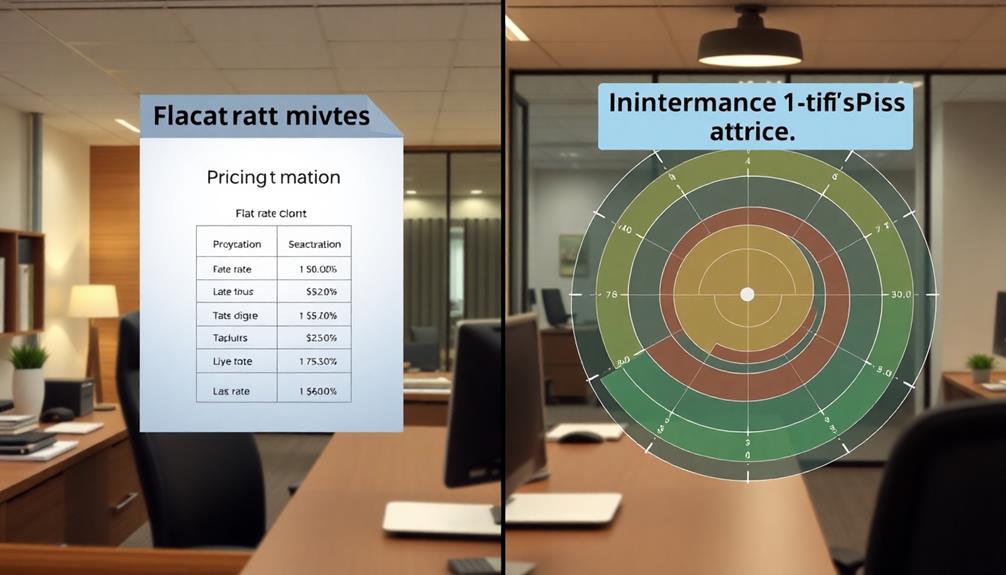Understanding merchant account fees is essential for managing your business costs. These fees typically range from 1.5% to 3.5% per transaction and include interchange fees set by banks and assessment fees from card networks. Payment processors add their markup, which can affect your overall expenses. You've got pricing models like flat-rate and interchange-plus to evaluate, as each impacts your budget differently. Chargeback and monthly service fees also play a role in overall costs. By breaking down these expenses, you can identify hidden fees and negotiate better rates, helping your business save money in the long run. Discovering more strategies can enhance your savings potential.
Key Takeaways
- Merchant fees typically range from 1.5% to 3.5% per transaction, influenced by interchange and assessment fees.
- Pricing models include flat-rate, interchange-plus, and tiered, each affecting cost predictability and overall expenses.
- Common fees include transaction fees, chargeback fees, monthly service fees, and PCI compliance fees, impacting merchant profitability.
- Fee transparency is crucial for identifying hidden fees and negotiating better rates with payment processors.
- Regularly reviewing merchant statements can uncover discrepancies, helping businesses manage costs effectively.
Overview of Merchant Fees
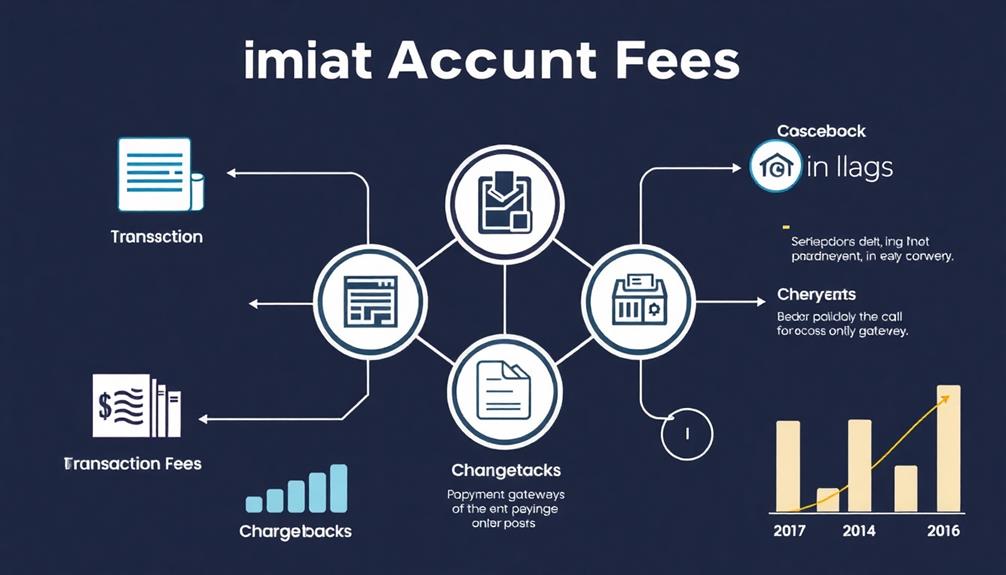
Merchant fees are an essential aspect of running a business that accepts credit card payments. These fees can range from 1.5% to 3.5% of each transaction, impacting your bottom line notably.
The main components of these merchant service fees include interchange fees, which are set by the cardholder's issuing bank, and assessment fees charged by card networks. Additionally, payment processors often add their markup, contributing to your overall credit card processing fees.
Understanding the fee structure is critical for effective cost management, as identifying potential financial risks associated with transaction processing can help mitigate unexpected expenses. It's easy to overlook hidden fees that can sneak into your merchant statements, complicating your budgeting and financial planning.
For example, the merchant discount rate encompasses all these fees, and it varies based on several factors, such as the card type, transaction volume, and payment method.
In 2020, U.S. merchants paid about $110 billion in processing fees, underscoring the importance of analyzing these costs. By familiarizing yourself with transaction fees and various pricing models, you can better navigate the cost of processing and optimize your financial outcomes.
Types of Pricing Models
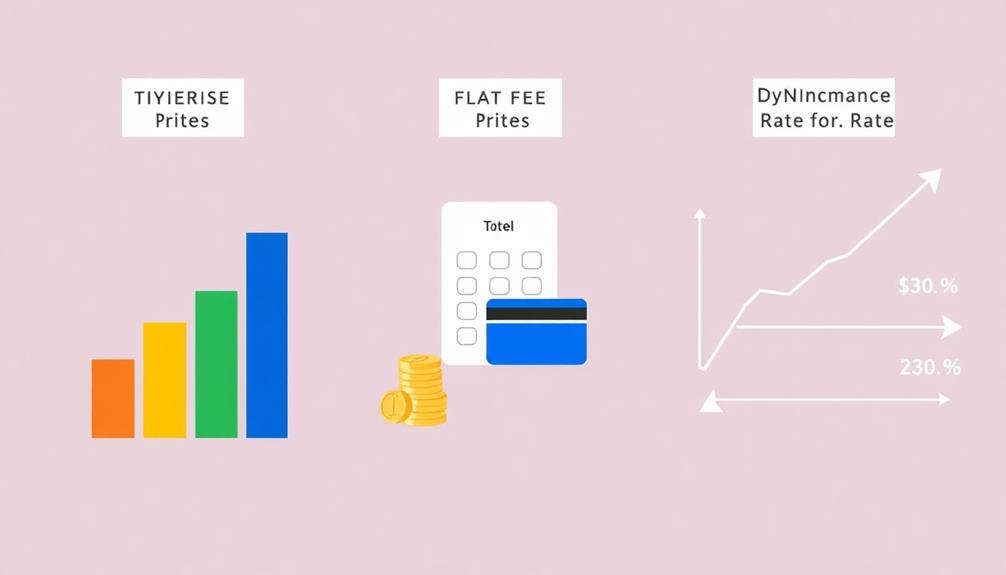
When it comes to selecting a pricing model for your merchant account, understanding the options available is crucial. There are three main pricing models: flat-rate pricing, interchange-plus pricing, and tiered pricing. Each has distinct implications for your merchant account fees.
Credit card insights reveal that understanding transaction costs is essential for financial management. Flat-rate pricing charges a fixed percentage per transaction, generally between 1.75% to 3%. While this model offers predictability, it can lead to higher overall costs, especially if your transaction volume is significant.
On the other hand, interchange-plus pricing provides a detailed breakdown of fees based on actual interchange rates set by card networks. This often results in lower overall costs, particularly for high-volume merchants.
Tiered pricing categorizes transaction fees into different tiers based on risk and card types. While this might seem flexible, it can create confusion and unpredictability in your overall costs.
To effectively optimize costs, you should evaluate your transaction volume and the types of cards you typically accept. By doing so, you'll be better positioned to choose the pricing model that aligns with your business needs and minimizes your payment processing expenses.
Common Merchant Fees
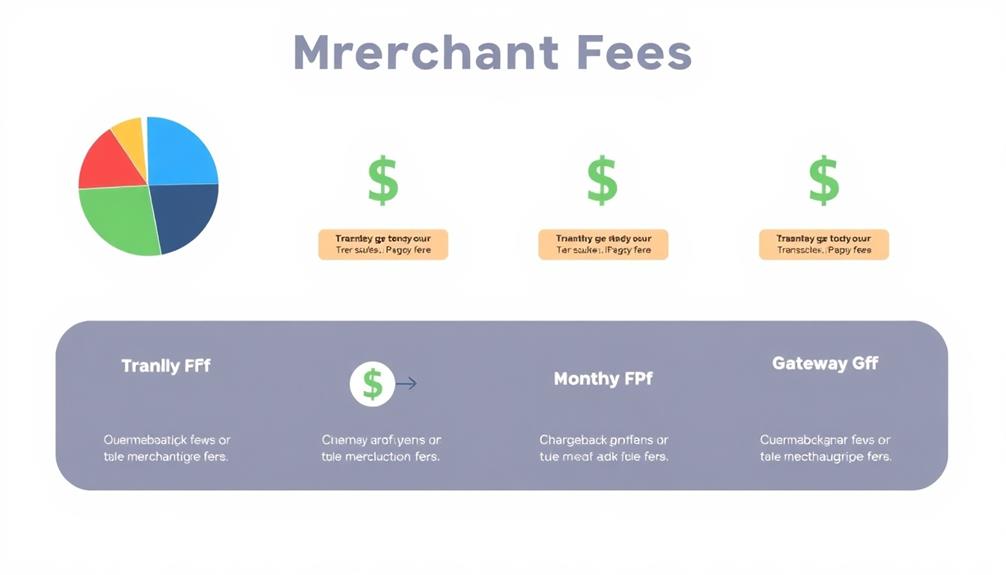
Often overlooked, common merchant fees can greatly affect your business's profitability. Understanding these fees is vital to managing your expenses effectively. Merchant fees generally comprise interchange fees, assessment fees, and processor markup. Here's a breakdown of the most common fees you might encounter:
| Fee Type | Description | Average Cost |
|---|---|---|
| Transaction Fees | Charged per credit card transaction | 1.5% – 3.5% of sale |
| Chargeback Fees | Fees for disputes | $15 – $100 per incident |
| Monthly Service Fees | Account maintenance fees | Varies by provider |
| PCI Compliance Fees | Fees for adhering to security standards | Varies by provider |
In addition to these, don't forget about the processor markup, which adds to your overall costs. The average merchant fee for processing credit card transactions can greatly impact your bottom line, so it's important to keep track of these charges. By understanding common merchant fees, you can better prepare for their influence on your business and make informed decisions moving forward.
Strategies for Cost Management
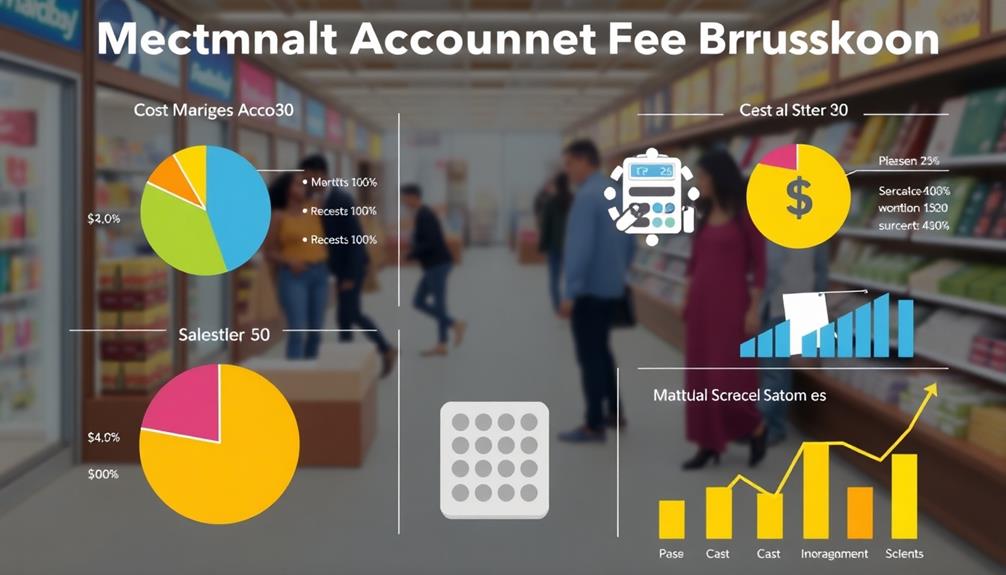
To effectively manage costs associated with merchant accounts, you should actively evaluate your expenses and identify areas for improvement.
Start by conducting a thorough merchant statement review to uncover discrepancies and hidden fees that could inflate your costs. Understanding fee structures allows you to pinpoint where savings can occur.
Next, consider negotiating rates with your payment processor based on your transaction volume. Higher volumes can lead to better rates, helping you reduce processing costs considerably.
Educating your staff about these fee structures empowers them to make informed decisions that enhance your cost-saving strategies.
Encouraging customers to use lower-cost payment methods, like debit cards, can further decrease merchant fees compared to credit card transactions.
Additionally, implementing technology solutions such as efficient payment gateways can streamline your processing and minimize expenses.
Importance of Fee Transparency

Fee transparency plays an important role in helping businesses effectively manage their operational costs. When you have clear visibility into your merchant account fees, it's easier to forecast your expenses and enhance your financial planning.
Understanding the benefits of merchant account credit processing can also help you make informed decisions about fee structures and overall costs. Unfortunately, research shows that around 20% of these fees are often undisclosed, which can lead to surprises that inflate your overall processing expenses.
By scrutinizing your statements and understanding the fee structures of payment processors, you can identify hidden fees that might otherwise go unnoticed. This transparency fosters trust between you and your payment processor, reducing the likelihood of disputes and misunderstandings regarding billing practices.
Moreover, when you prioritize fee transparency, you empower yourself to negotiate better terms with service providers. This could potentially lower your overall merchant fees, ultimately improving your profit margins.
Compliance regulations also play a part here; adhering to rules that mandate clear fee disclosure helps you avoid legal pitfalls and guarantees you stay informed about the costs associated with your payment processing services.
In short, embracing fee transparency is essential for maneuvering the complexities of merchant account fees efficiently.
Frequently Asked Questions
How Do You Explain Merchant Fees?
Merchant fees are the charges you pay for processing credit card transactions. They usually fall between 1.5% and 3.5% per transaction, influenced by factors like card type, provider, and transaction volume.
What Are the Typical Merchant Account Fees?
They say, "You get what you pay for." Typical merchant account fees range from 1.5% to 3.5% per transaction, influenced by your payment processor, card issuer, and transaction method. Watch for hidden costs!
What Are the Charges of a Merchant Account?
Merchant account charges include processing fees, monthly service fees, and incidental costs like chargebacks. You'll encounter various fees based on transaction types and card networks, so keeping track helps manage your overall expenses effectively.
What Fees Are Usually Behind the Merchant Service Charge?
When you immerse yourself in merchant service charges, you'll find a tapestry of fees woven together. Interchange fees, assessment fees, and processor markups all play their part, shaping the costs you'll encounter in your transactions.
Conclusion
So, you thought accepting payments was straightforward? Welcome to the world of merchant account fees, where every swipe, dip, and tap comes with a hidden cost. But don't worry; with a bit of savvy, you can navigate these fees like a pro. By understanding pricing models and keeping an eye on those pesky charges, you'll find ways to save. Ironically, the more you know, the less you'll feel like your profits are slipping away with every transaction!


